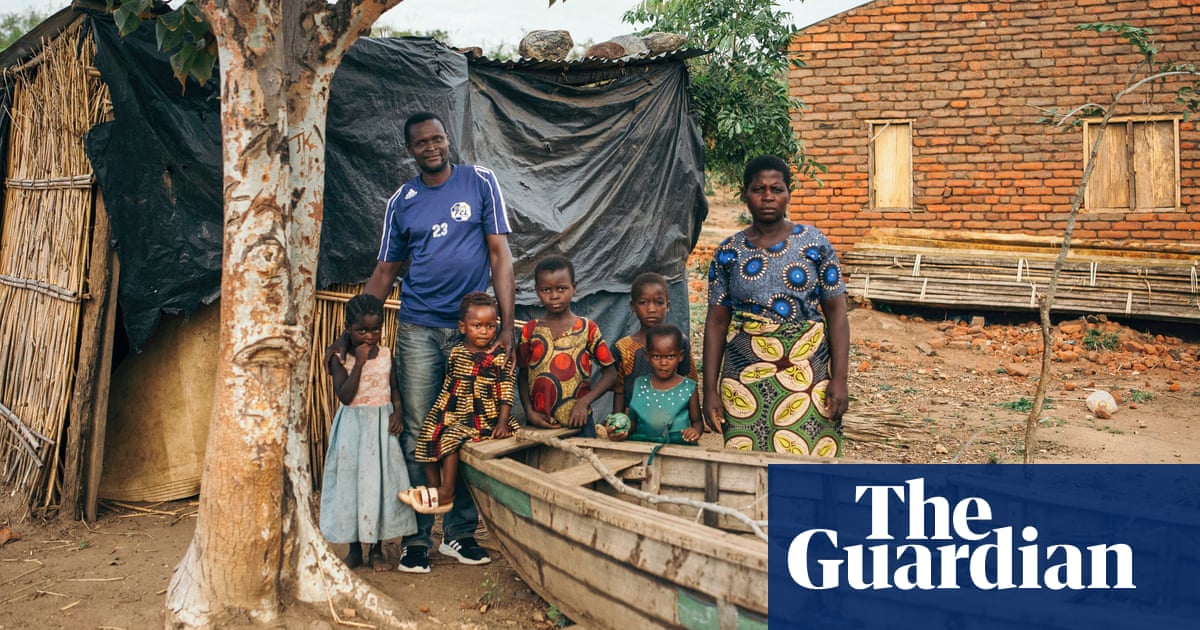World
From Scotland to Malawi: climate survivors are rebuilding with world first loss and damage fund

Gladys Austin is a climate disaster survivor. In March last year the 39-year-old mother of six stood in ankle-deep water in the room where her family slept. She tried to stay calm as the relentless rain battered her home. Her village’s trading centre, school and the chief’s home, built on an elevated foundation, were all submerged.
The storm destroyed the sandbars on Malawi’s Ruo River, where she and her husband, Biyeni Twaya, 46, fished as well as the field they had farmed since their youth, growing maize, beans and tomatoes. Goats, ducks and chickens, bags of grain that Austin had saved over the years, were all washed away. She estimates they were worth 6m kwacha (£2,700).
Cyclone Freddy, which ripped across the southern Indian Ocean, devastating swathes of Mozambique, Madagascar and Malawi, was the longest-recorded tropical storm in history. By the time it subsided, after five weeks of destruction, Austin and the 5,000 residents of Makwalo village in Malawi’s southern Nsanje District had lost everything.
The village chief, Meke Nkhandwe, ordered everyone to evacuate. Some people went to stay with relatives or friends. But Austin and her family squatted in their flooded home for nearly three months until, in June, they reluctantly moved to Namiyala refugee camp, about six miles away. She says their attachment to their land and concern over conditions at the camp kept them from leaving. “I was in shock, but eventually had to keep moving for us to survive,” she says.
According to the government’s post-disaster needs assessment, Cyclone Freddy killed 679 people and displaced 659,000 in southern Malawi. The storm caused $506.7m (£394m) worth of physical damage and economic losses, with $45.5m in Nsanje alone. Before 2015, the country had never seen a cyclone.
Nsanje District was one of the worst-hit areas, with 20,000 households destroyed. For more than two months, Austin and her family stayed at Namiyala – a primary school converted into a makeshift camp – with more than 10,000 other people displaced from the greater Makhanga area.
Namiyala felt like it was constantly on the brink of collapse, according to Elson Labu, the camp’s manager and chair of the Makhanga civil protection committee. The Malawian army and Red Cross provided seven gazebo tents, 200 blankets and 100 torches. Although they had some buckets and chlorine for mopping toilets, they didn’t have enough. “We had a trachoma outbreak, other camps had cholera outbreaks. There was also malaria,” Labu says.
“Staying at the camp was hard, since we’re used to having our own space, and there it was chaos,” adds Twaya.
By October, an 80-hectare (197-acre) site had been identified for a new village for the displaced people of Makwalo. Sixteen months on from Cyclone Freddy, Austin and her family are living in a brick home in new Makwalo, a significant improvement on the plastic-covered shack where they spent the first two months of their relocation. Many of her neighbours are living in similar brick houses, surrounded by squabbling chickens and stalls where women sell tomatoes and fried fish.
Austin and Twaya are still finding their feet, working as casual labourers; their previous fishing spots remain silted out. But their children are at school and there’s a borehole built by the district council and the Department of Disaster Management Affairs (DoDMA), which oversaw the relocation project.
The couple were among 633 Nsanje households who are the first climate survivors globally to receive loss and damage funds via cash transfers. Payments of $750 were distributed over three months, as part of a fund launched by the Scottish government at Cop28 in 2023, and facilitated by the US nonprofit GiveDirectly, which provides humanitarian aid in cash and has been operating in Malawi since 2019. GiveDirectly’s donors matched Scotland’s £1m support – enough to provide 2,709 households with relocation funds. To date 2,695 have been paid with a further 14 are awaiting approval. The cash is provided with no strings attached.
Austin and Twaya used their payment to buy materials for a new house. It wasn’t a difficult decision, says Austin, a roof over their heads was the most pressing need. The first of the money came in December 2023 through a mobile payment via phones provided by GiveDirectly. Austin says that until she received that payment, she wasn’t sure she could believe the scheme was real.
“Since 2012, we have been living in fear of flooding,” says Austin. “We would have moved, but there was the matter of money and resources – we didn’t have any.”
With the second payment in February 2024, they bought more housing materials, plus clothing for their children. The third payment in March paid for labour to complete the construction of their home.
after newsletter promotion
“I don’t know what we would have done without that money,” says Austin. “If it weren’t for the transfers, we would still be living [in a shack] under that tree. There it was cold, and the children were getting sick. That wasn’t a home.”
While regions such as Nsanje have always been affected by floods and droughts, the rise in extreme weather events over the past decade has increased communities’ vulnerability. “It’s created a terrible cycle of displacement, where storms force people out, but they return to their ravaged villages, only to have to leave again with the next floods,” says Charles Kalemba, the commissioner for DoDMA. By 2022, most of Makwalo’s fields were knee-high in water; the Ruo shifted course by several hundred metres, rendering a government bridge project defunct.
“We have to try to solve the root cause of the displacement, which means relocating people once and for all,” Kalemba says. “The government is therefore changing its strategy to building resilience, rather than responding to annual emergencies.” The agency, already strapped for resources, could not continue with the sisyphean task of repeatedly bailing out the same communities devastated by floods and cyclones.
In May this year, DoDMA began a collaboration with the US Army Corps of Engineers to geospatially map flood-prone areas, delineating places across Malawi that cannot be inhabited from those that can. The project will be completed by 30 August this year, says Chipiliro Khamula, DoDMA’s information manager.
“So far, about half of the 20,000 households in the Nsanje District have been relocated,” Kalemba says. Although GiveDirectly is the only organisation to provide cash support, Gift of Givers, UNHCR, Red Cross, and Goodwill Ambassadors have offered food, water and tarpaulins.
“The timeline for the other 10,000 households or so will depend on resources,” Kalemba says. The process of identifying appropriate land for relocation – complicated by chieftaincy territories and family ties – can be arduous.
“The west has an obligation to assist us to repair, recover, get to resilience. We didn’t contribute to a lot of the problems we are facing now,” he adds. “The UN should be used to mobilise resources. It’s helpful to talk to governments and bring people together, but we’ve talked for over 20 years now. We’re going into Cop29, that’s 29 years of talking. Many of those pledges remain just that – pledges.”
Elizabeth Fred, a mother of five, moved to the new Makwalo in May. Like Austin, she previously relied on fishing and farming. Now, she and her husband work as casual labourers, mostly back-breaking work like digging ditches or fetching water. Fred hopes to return to fishing once the river stabilises.
Occasionally she returns to tend to the sliver of her farm in old Makwalo that is left, paying a boat to cross the river, and walking more than two hours to get there. Although some of the water has receded, the fields are full of silt – she’s returning more out of optimism than anything else. She doesn’t visit their old home, the path has been completely overcome by brambles.










